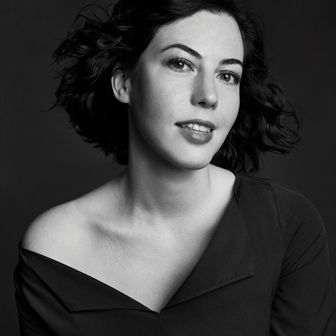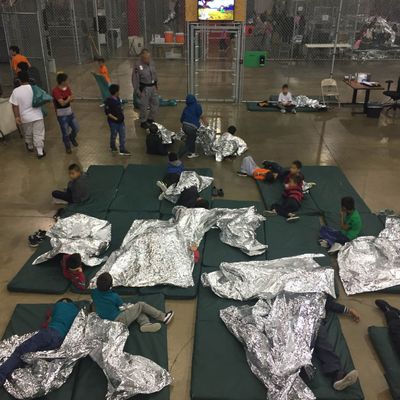
Under the Trump administration’s cruel and extreme “zero tolerance” immigration policy, many families seeking asylum in the U.S. are being ripped apart at the border. Thousands of parents have been separated from their children. In recent weeks, reports have started emerging about the horrific conditions inside the facilities in which these children are being housed.
Reporters and advocates touring the detention centers have described “prison-like” conditions — calling them a form of “child abuse” that puts children at risk of running away, harming themselves, or committing suicide. Below are some images and accounts they’ve shared, from numerous locations near the border.
McAllen, Texas
Most of the migrant family separations in recent weeks have occurred at the Border Patrol’s Central Processing Station in McAllen, Texas — known as “Ursula.”
On Sunday, the U.S. Border and Customs Protection agency allowed several news organizations to tour the McAllen facility, and released video and pictures (though they wouldn’t allow news organizations to bring their own cameras into the facility).
According to NBC News, Ursula is the CBP’s largest immigration processing center, with hundreds of people being kept behind metal chain-linked fences (“cages”) and given green sleeping pads and mylar blankets (see above) during their period of detention.
An official at the Department of Homeland Security told NBC News that Ursula is the “epicenter” of the immigrant family separation policy. According to Manuel Padilla, the Border Patrol sector chief, 1,174 children have been taken away from their parents in the South Texas Rio Grande Valley sector, and many have been brought to the processing station since May 7.
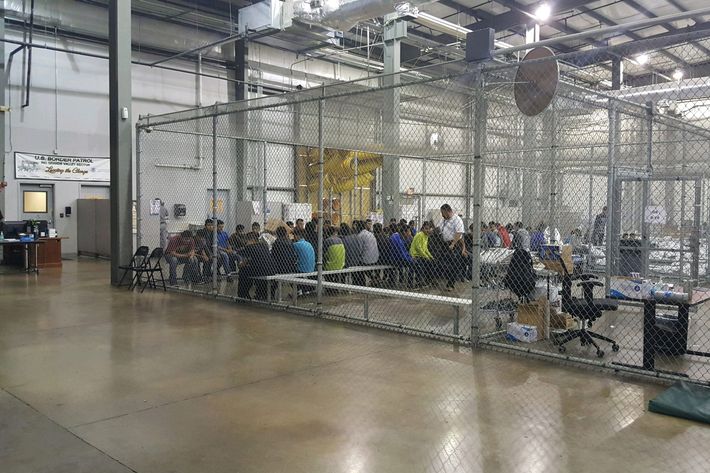
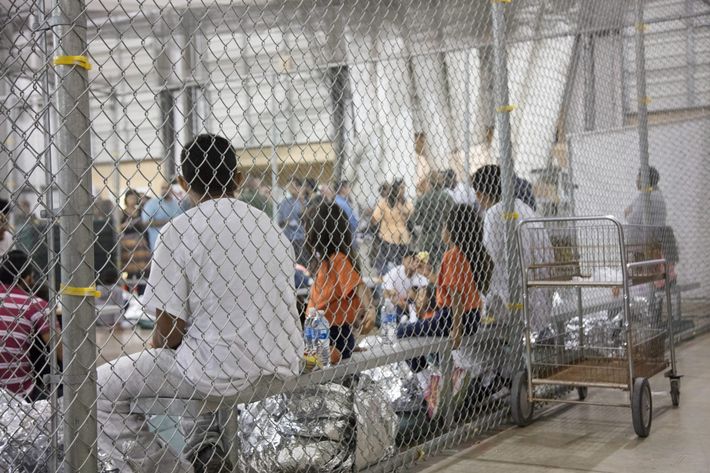
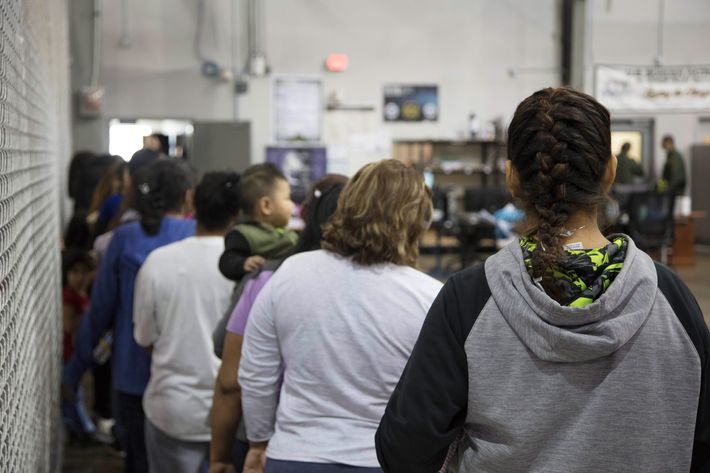
When the news outlets toured the 77,000-square foot Ursula facility on Sunday, 1,129 migrants were detained — having been brought in for “processing,” during which many parents end up separated from their children.
If a child is separated from their parent at the processing center, they are supposed to be sent to different facilities operated by the Department of Health and Human Services, as no one is supposed to stay in processing centers for more than 72 hours (under U.S. law). But because of backlogs, hundreds of minors end up having to stay past the 72-hour limit.
As a result, many children who enter the facility with their parents end up staying in the detention center alone without their parents before they are sent away to HHS centers (also without their parents).
Brownsville, Texas
Last week, a small group of reporters toured Casa Padre, a former WalMart where the government is now holding over 1,400 boys in federal custody. The boys sleep in doorless rooms, reporters said, which each host five beds due to overcrowding. One reporter who had been granted access to the facility tweeted that it felt “like a prison or jail.”
One of the first things one sees when entering the center is a large mural of President Trump, next to an inspirational quote from The Art of the Deal: “Sometimes by losing a battle you find a new way to win the war.”
The children kept in custody here are reportedly allowed two hours outside per day: one hour of physical exercise and one of free time.
San Diego, California
In San Diego, California, unaccompanied migrant children are being held at Casa San Diego. The facility houses classrooms, a recreation area with soccer goals and a medical clinic, the San Diego Union-Tribune notes, but beyond that, it sounds just like a classic detention center. It is surrounded by fencing with privacy netting, is under constant video surveillance, and there’s a gate that, if anyone opens without swiping an official privacy badge, an alarm starts to blare.
Staff at Casa San Diego have said that only 10 percent of the children held in the facility were separated by their parents, while the rest “appeared on their own.” New arrivals to the center are first taken to an intake room, where they are given new clothes and a hot meal. The children are permitted to make two ten-minute phone calls per week from a specific room in the facility — with six phones in red booths — and there is reportedly a sign hanging in the case manager room warning them to watch out for children who might run away.
According to an HHS official, there are about 100 of these facilities in 17 states, and most children are eventually released to a sponsor in the U.S. after spending an average of 56 days in the facility.
At the moment, there are around 11,351 children being held in these Office of Refugee Resettlement facilities, an official notes.
There are ways we can help families separated at the border. Please see here.


